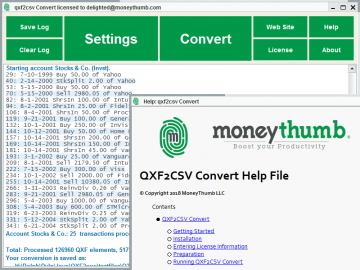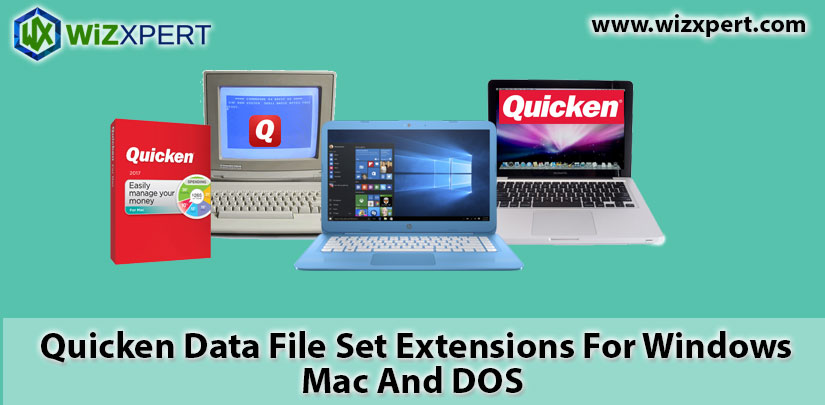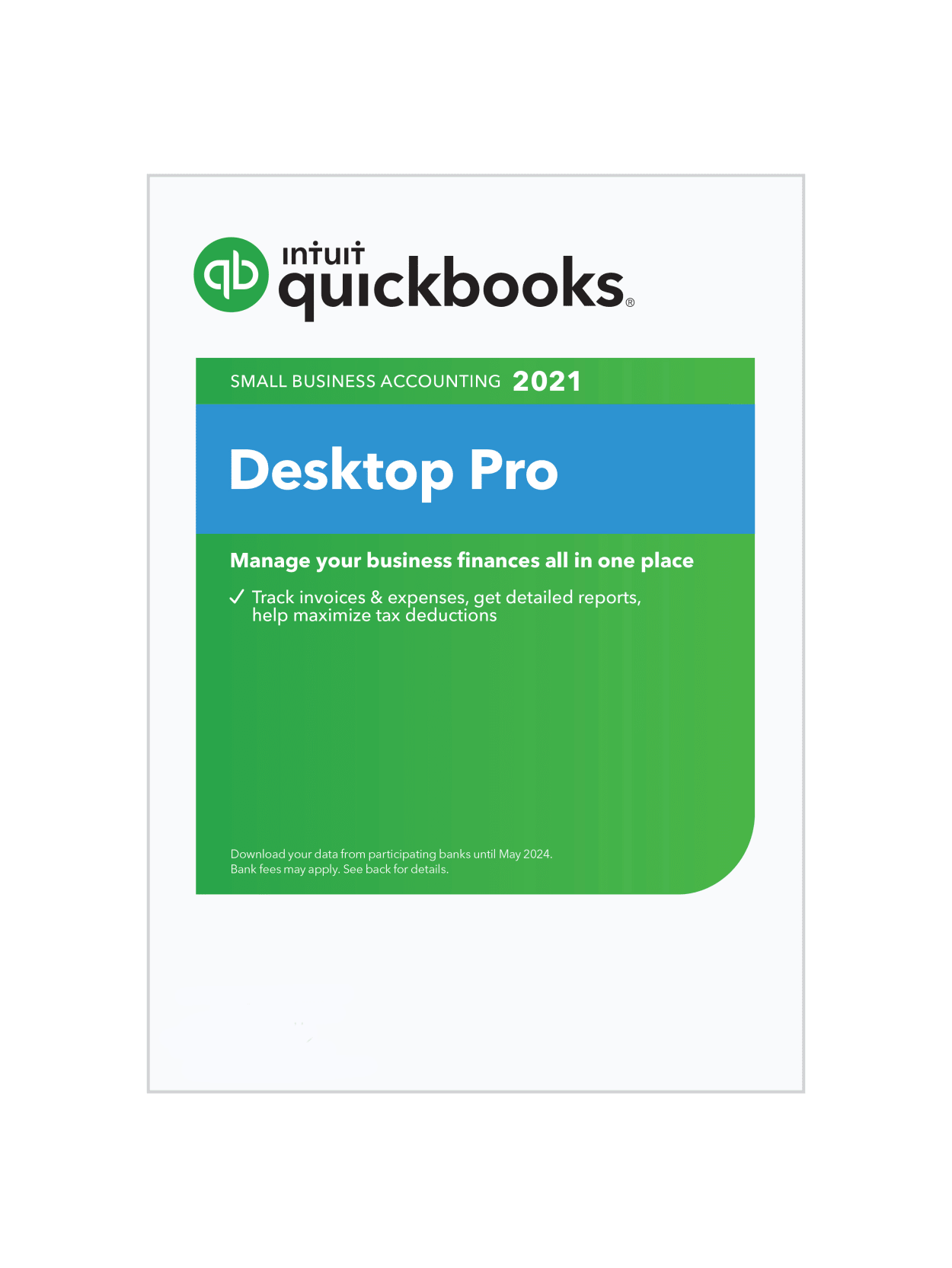- Can Quickbooks Read Quicken Files
- Import Quicken To Quickbooks
- Import Quicken For Windows Into Quickbooks For Mac Osx
- Quickbooks To Quicken
- How To Import Into Quicken
To migrate your data from Quicken to Banktivity, you’ll first need to export ALL of your accounts accounts to a Single QIF file. The following instructions from Intuit’s website should help you with that export:
Please note that it is important to unhide all accounts and to properly prepare your accounts and categories in Quicken first. There are additional considerations which are detailed below.
- Import Quicken Data to Quickbooks For QuickBooks Mac I believe 2015 is the last version that will import a Quicken file. That said it rarely turns out well as the data requirements are too different.
- Open (continue) your tax return in TurboTax. From the TurboTax File menu in the upper-left corner, select Import From Accounting Software. If you're importing from both Quicken and QuickBooks, import from QuickBooks first. Select QuickBooks (2014-2020), click Continue, and follow the onscreen instructions.
Converting Quicken for Windows files
Overview
The following components of your Quicken for Windows data file can be converted to QIF:
There is currently not a way to convert data from Quickbooks to Quicken. Data can be converted from Quicken to Quickbooks, however if assistance is required during that process, it can only be provided by Quickbooks support. You can find Quickbooks support here (the phone number will be located in the upper right of the QuickBooks main page). Depending on the version(s) of the software you have, you may be able to export your PC version and then re-import it into the Mac version. Klein, EA: The Mac version of Quicken does not have as many features as the PC version, and as a result, some of your data may be lost inthe conversion process. Quicken for Mac 2015-2017 10 QuickBooks Online Edition 12 Mint Conversion Information 16 Web Connect: Quicken for Windows 17 Quicken for Mac 2007 19 Quicken for Mac 2015-2017 21 QuickBooks for Windows 23 QuickBooks for Mac 26 Express Web Connect.
– Account types that exist in both Quicken for Windows and Quicken for Mac.
– Banking transactions.
– Most investment transactions.
– Categories, classes, and securities contained within the exported transactions.
The following components of your Quicken for Windows data file that cannot be converted to QIF:
– Employee Stock Purchase Plan (ESPP) transactions
– Employee Stock Option Plan (ESOP) transactions
– Quicken for Windows business accounts:
- Invoices
- Business bills
– Loan amortization schedules
Can Quickbooks Read Quicken Files
– Online banking information such as account setup information, Online Payees, and online payment instructions
– Scheduled Transactions
– QuickFill (memorized) Transactions
– Saved or memorized reports
– Security price history
– Tax status of Investment accounts
– Certain types of investment transactions.

Converting your file is a 3-part process. First you must prepare the Quicken for Windows files, then create QIF (Quicken Interchange Format) files, and finally create a new file on the Mac and import the QIF files.
Prepare the Quicken for Windows files
Account names and category names can be no more than 15 characters long. To shorten longer names:
– Select the Tools menu and select Account List.
– Click the Options button and select View hidden accounts.
– Click the Manage Accounts tab and clear all Hide in Quicken checkboxes.
– For each account whose name has more than 15 characters:
Right-click the account and select Edit.
Enter a name no more than 15 characters long, and then click OK.
– Select the Tools menu and select Category List.
– For each account whose name has more than 15 characters:
Select the category name and select Edit.
Enter a name no more than 15 characters long, and then click OK.
– Names of securities cannot contain special characters and ticker symbols must be all uppercase letters:
Select the Investing menu and select Security List. For each security name that contains a character such as !, @, #, $, %, ^, &, or *:
- Right-click the security name and select Edit.
- Change the name so it does not contain those characters.
- For each ticker symbol that is not all uppercase:
- Right click the ticker symbol and select Edit.
- Change the symbol to all uppercase letters, such as AAPL, and then click OK.
– Accept all downloaded transactions to the account register or list.
A red flag next to the name of an account indicates the account has a pending action, such as a downloaded transaction to be accepted.
– Click the Downloaded Transactions tab at the bottom of the window to accept the transactions into the register.
Important: Any downloaded transactions not accepted will be lost during the conversion.
– Cancel any repeating online payments and pending online payments.
Create QIF (Quicken Interchange Format) Files

– Use Quicken for Windows to open the data file.
– Select the File menu and select Export > QIF File.
– On the QIF Export window, click Browse.
– Enter the file name Quicken Export.QIF, navigate to where you want to store the file, and click OK. Make a note of the location.
– Complete the remainder of the QIF Export window
- Click the Quicken Account to Export from drop-down arrow choose “All Accounts” (scroll up in the list of accounts).
- In the Include Transactions in Dates fields, leave the default dates.
- In the Include in Export area, select Transactions, Category List, Account List and Security Lists.
- Click OK to create the QIF file at the location you selected in step 4.
- On the QIF Export window, select the checkbox corresponding to the item in the file name.
- Save all files in the same location.
– Insert a CD or DVD into your CD-ROM or DVD drive or attach a removable drive. (Be sure the CD, DVD, or removable media you are using is compatible with both the Windows computer and the Mac.)
– Copy your exported QIF file(s) from Quicken to the CD/DVD/Removable Drive.
– Eject the CD/DVD/Removable Drive from your PC
– Connect/Insert the CD/DVD/Removable Drive to your Mac
Now in Banktivity on your Mac
– Open Banktivity


– After Banktivity opens, choose File> New > Document from Quicken
– Select ‘Quicken for Windows’ and click ‘Continue’
– On the next screen, click ‘Choose File’, find your QIF file, and click ‘Open’
– At the next step, Banktivity will ask you to confirm the imported account types and currencies of each account. To change the type or currency suggested by Banktivity, click the double-arrow and choose from the list that appears. Click ‘Import Selected Accounts’
– When the import is complete, Banktivity will prompt you to save the document. Choose a location, enter a name, and click ‘Save’ to finish the process
Banktivity will import the accounts, transactions, categories, and investments from the QIF file (other features such as scheduled transactions, memorized transactions, budgets, and reports cannot be imported).
Let us know if you have any further questions about migrating from Quicken to Banktivity!
Import created QFX file into Quicken for Windows
When the QFX file is created, switch to Quicken and import created QFX file. file. Make sure that the account is not connected to online services. Click 'Tools' - 'Account List'.
We have to disconnect from online services first. Click 'Edit'.
Then click 'Online Services' and click on the 'Deactivate' button. Then click 'Yes' and 'Ok'.
Make sure to backup your data. You can easily roll back or restore your data to the previous state if the transactions are imported incorrectly. After disconnecting the account from Online Services, you can import a QFX file. To import a QFX file, select 'File' - 'File Import' - 'Web Connect (.QFX) File', select created QFX.
You can select 'Create a new account' or you can select 'Link to an existing account to import transactions'. If you are disconnected from online services, that account will be shown on the list. You may choose to keep online services connected and import into a new account, if you have something temporary to import. You can import in that account, and then move transactions from that account to another account. So this way you will keep the existing account connected to online services and you don't have to connect it back later. Click the 'Import' button.
Then click the 'Close' button.

All transactions are imported here, they are shown in the bottom part. You can review transactions and use Renaming Rules if you like. Then click 'Accept All transactions'.
They are accepted and listed in Quicken.
Import created QFX file into Quicken for macOS
When the QFX file is created, switch to Quicken and import created QFX file. Make sure that the account is not connected to online services. Right-click - 'Edit' account.
Import Quicken To Quickbooks
If you see, for example, Connection Type (Web Connect), it means that it is connected. We have to disconnect from online services first. Click on 'Set up transaction download'.
Then click the 'Options' button.
Select 'Enter transactions manually' and click the 'Continue' button.
Import Quicken For Windows Into Quickbooks For Mac Osx
Click the 'Finish' button. This way you disconnect from direct online download and now you can import a QFX file into this account.
Before importing a QFX file go to settings, clicking 'Preferences'.
Then click 'Connected Services'.
And uncheck 'Automatically improve the quality of downloaded payee names and categories'. Because it could change your Payee names and assign categories, that are not applicable.
Quickbooks To Quicken
In Quicken, backup your data file before importing. You can easily roll back or restore your data to the previous state if the transactions are imported incorrectly. To import a QFX file, select 'File' - 'Import' - 'Bank or Brokerage File (OFX, QFX)', select created QFX file.
And select an existing account to import transactions instead 'Add a new Quicken account'. Click the 'Continue' button.
Now your transactions are imported. You can categorize, review, delete them. They are already inside Quicken. There is no category. This category is assigned by Quicken. This is not from the CSV file. QFX files do not have categories. You can change the category. And Quicken will use that choice next time you import.
How To Import Into Quicken
Related articles
